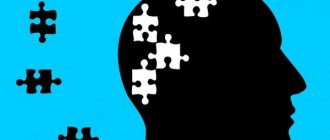Professional self-determination is a form of personal choice that reflects the process of searching for and acquiring a profession. Self-determination is realized in the process of analyzing personal capabilities and abilities in relation to professional requirements. Currently, the understanding of professional self-determination takes into account the problems of the relationship with the life self-determination of the individual, and also includes the influence of the influence of the social environment on the individual and his active position. In a market economy, the problem of freedom to choose a profession and ensuring the competitiveness of an employee is acute.
Self-determination in psychology
When choosing a profession, a person overestimates past events and correlates the choice of activity with life goals. The importance of self-orientation is that work is one of the leading areas of life.
Psychologist A. Klimov worked on the formation of the structure of self-determination, correlating professional orientation with criteria for the quality of mental development of the individual. Psychology connects self-awareness with the choice of lifestyle according to personal attitude towards a specific job.
The structure of professional self-determination consists of:
- awareness of belonging to a specific professional group;
- assessment of the place of work and personal development according to public and personal standards;
- recognition by the group of membership in the community;
- understanding weak and strong traits, individual and productive ways to achieve mastery;
- a person’s opinions about himself and his work.
In psychology, two levels of professional self-determination are defined: practical and epistemological. The first group includes events or actions that influence external factors around the individual (social status, change in marital status). The second group includes changes in internal factors, whose restructuring is caused by events or work itself.
There is no single task of career guidance for science. Age-related characteristics of professional self-determination influence the technology of choice at each period of time. The driving force is the acceptance of human responsibility for development.
Professional self-determination and self-realization are closely related. Read more about personal self-realization →
Classification according to Klimov
The result of an individual’s professional self-determination is the decision made to choose a profession. E.A. Klimov proposed the following scheme:
- self-introduction and overview of the world of professions;
- identifying the limitations and opportunities that are associated with reality and dividing them into 3 degrees of significance: a) which must be taken into account, b) best taken into account, c) can be neglected;
- collecting data and information about the chosen specialty, including backup options, and, if necessary, re-clarification;
- thinking about options for mastering a profession;
- mental consideration of the parameters of a personal professional plan;
- final choice of profession.
Basics of professional self-determination
Career guidance is a multifaceted concept that includes pedagogical and psychological factors.
Self-determination is divided into three subtypes:
- Professional (choice of profession).
- Personal (prioritization: career development or personal improvement).
- Life (defining the purpose of existence).
The described subtypes are interrelated and complement each other.
A person for whom work is the meaning of life realizes his personal goals through a career or achieves heights in his hobby (music, painting, sports) that exceed the achievements of professionals in a particular field.
Self-determination is characterized by the following characteristics:
- relatively large formality (diplomas, certificates of education, entries in the work book, real achievements);
- the existence of favorable conditions for development (equipment, team/management, social need for activity).
Worker self-realization faces many obstacles. Society is not ready for a fair assessment of the work of a particular person; there may be a lack of ways of implementation in the chosen field due to several reasons (health, underdevelopment of the industry).
Specific signs of life self-determination:
- the comprehensiveness of the lifestyle that is characteristic of the usual socio-cultural environment;
- the degree of dependence of the individual on stereotypes and public opinion;
- the level of influence of social, economic and objective factors that determine the life of a social and working group.
The purpose or meaning of life is gradually formed from one’s own judgments, the opinions of society and upbringing.
Characteristic features of personal self-orientation:
- impossibility of formal measurement;
- the need for more complex conditions, problems that allow one to reveal the inner qualities of a person.
This need for “complexity” explains the emergence of heroic individuals during periods of wars and other disasters. In relatively prosperous times, personal choice is expressed in life goals and principles of behavior.
Let's summarize
Choosing a profession is one of the most important and responsible decisions. However, it is not irreversible. What a high school student chooses today is simply a reflection of his current needs and interests. Ideally, the chosen direction will be in demand and interesting for decades. Changing preferences is not at all tragic. Now this will most likely become the new norm. Experts say that choosing a career for life is gradually becoming a relic of the past and is considered impractical. Progress makes such serious adjustments to our lives that it is unlikely that we will be able to work in one place until retirement age. Rapid changes in the world make it impossible to predict what the labor market will be like, for example, in the 2030-2040s. It is likely that popular and highly paid professions today will lose their relevance. However, this should not be confusing or intimidating. Everyone will have the opportunity to change their activity profile or start over - regardless of age and existing knowledge, skills and abilities.
Stages of choosing a profession
Self-determination is a changeable state; the process does not stop at a certain age. A person chooses a profession that may cease to please after a few years. Then the individual needs to search for a new calling.
The following stages of self-determination are distinguished:
- preschool (children);
- teenage (or school);
- youthful;
- stage of growing up (or maturity)
- retirement or senior period.
Each period of a person’s life is characterized by age characteristics and needs.
Younger age
The child’s behavior and choice are influenced by external factors, since at this stage (up to 10 years) personal judgment and a system of life principles have not been formed. Kids imitate their parents and older comrades. At a young age, the child is guided by the professions of his relatives, creating for himself an understanding of his future professional activities.
An additional criterion is getting good grades or praise from teachers.
Teenage stage
The period (10-15 years) is one of the key life milestones. The child understands and recognizes his own strengths and weaknesses.
A teenager differentiates between work he likes and work he does under duress (from parents, teachers).
There is a division of professions based on gender:
- Boys are characterized by a desire for self-expression and self-affirmation;
- girls choose activities related to fashion and pop.
Sexual division disappears in the next period of self-determination (from 16 to 23 years).
Youth stage
The turning point age is the period of leaving secondary school, when the question of professional self-determination arises. A teenager chooses between work and getting a specialized education at a university.
The choice in favor of education is made by those young people who have not decided on their future profession. The period is characterized by the destruction of the romanticized idea of adult life and work. A person is forced to make decisions that affect his future existence. Often a teenager experiences disappointment in his choice and changes the area in which he wants to develop.
Maturity stage
This category includes people who have completed the education process and are only engaged in a career. An adult has experience and a place of work.
A mature personality shows social and professional activity, thinks about career growth and takes steps for development.
At this stage, the most important age is 30 years, since the problem of self-determination becomes extremely relevant. A person finally chooses a profession, changes the previous one, which can be accompanied by a long search for oneself and emotional burnout.
Are you ready to stop thinking about your problem and finally move on to real actions that will help you get rid of your problems once and for all? Then perhaps you will be interested in this article .
Despite the difficulties of self-orientation, the “adult” stage is the most productive in life and ends at 65-70 years of age. Fatigue from the chosen job may appear after 30 years of activity.
Retirement stage
The period begins after 70 years. A person often does not fully realize his professional and personal potential, which causes depression, anxiety, and disappointment. The pensioner is faced with an assessment of his own life path, strives to realize himself in the personal and life sphere. The next stage of professional self-determination allows you to find a new field for activity or hobby.
Soviet cosmonaut Yu.A. Gagarin spoke about his profession and career in general: “You work well when you love your profession and are passionate about it.”
How to help your child choose a profession
Since it can be quite difficult for a student to choose a profession on his own, parents should try to help him by pointing him in the right direction. As you know, any difficult problem can be solved much easier if you divide it into parts. We invite you to familiarize yourself with the step-by-step instructions for professional self-determination, which will help your child figure out what he wants to become in the future.
First stage. Desires
Think about your “wants” (wishes and preferences) regarding your future activity in particular and life in general. After all, a profession has a significant impact on a person, his life, leisure time and even relationships with loved ones.
What or who does the child like to interact with most: other people, documentation, technology, animals? Perhaps he enjoys working with information? Maybe he is interested in art (choreography, painting, music, theatrical performances, etc.)? The answers to these questions can be gleaned from everyday life, school activities, preferences and hobbies. It is important not to miss here: if a son or daughter spends hours on end on the Internet, this does not mean that they have a penchant for working with technology. It is quite possible that they like something completely different - for example, communicating with people.
Indicate the requirements for working conditions: outdoors or in the office, on the move or sedentary, constant communication or remote employment. The work schedule is also important: clearly scheduled by the hour or flexible, which you can manage independently.
Second phase. Possibilities
Carefully weigh the child's abilities and capabilities. Invite him to think about which subjects at school are easiest for him (science or humanities), which problems are easier to solve (creative or with a clear sequence of actions).
Give a realistic assessment of the level of intelligence, communication skills (effective communication, persuasion of interlocutors, conflict resolution, ease of contact with a stranger) and organizational skills. Base your conclusions on the child’s experience. Let him ask his loved ones (brothers, sisters, friends) how they see him. Ask him to describe his personal qualities: responsible or dishonest, neat or slob, selfish or altruistic. It is very good if a student can list the 10 main character traits that are inherent to him.
Help your son or daughter soberly assess their physical capabilities and be sure to take into account health limitations, if any. For some professions (for example, those related to sports or the chemical industry) this will be important.
Third stage. Studying professions
At this stage, the vector of the teenager’s future activities has already been roughly outlined. Now you can start studying the relevant professions. Each of them requires certain abilities, skills and personal qualities. It is important to understand whether the child has them.
Even if you are sure that you know everything about your preferred type of activity, try to find a professiogram on the Internet - a complete description of the profession. In the process of getting to know her, you will discover many new nuances. In addition to a list of personal qualities, the professional profile contains a detailed description of the specialist’s responsibilities, recommendations regarding education, employer requirements, features of career growth, prospects, and so on.
There is an alternative option for getting to know professions. True, it requires more time and effort. You can see what they are like in reality if you talk to specialists right at their workplace.
Fourth stage. Analysis of the employment and education market
Help your child conduct a competent analysis of the education and labor markets. The main goal: to obtain information about the most popular and least popular professions by region and country. What is it for? Explain to your son or daughter that if the market is oversaturated with specialists in a certain type of activity, successful employment will require much higher qualifications in order to beat the competition. In addition, it is important to consider the salary level in the field of interest. After all, work should bring not only pleasure, but also sufficient stable income.
How to get this information? The easiest way is to go to several employment web resources and view the database of vacancies for your locality or region. This data will be the most objective. An alternative option: go to the employment center at your place of residence for information.
Separately, dwell on the opportunities to receive the necessary education in the areas that your child has identified as preferable. Is there a suitable educational institution in your locality or will he have to live in another city? Find out how things are going with budget (free) places. If they are not available, ask how much a year of training and a full course cost.
Fifth stage. Choice
The final stage involves making a final decision. For many this will not be easy. For example, I really like one profession because it matches my hobbies and provides an opportunity for self-realization. However, she lacks certain abilities. The other, on the contrary, is easy (you can cope with responsibilities without much difficulty), but does not provide for career growth. The third suits the interests and inclinations, but is absolutely not in demand in the region or the salary level leaves much to be desired. There is no ideal option, so it is unlikely that you will be able to make a clear choice.
Try to find a middle ground. Discuss with your child whether it would be more profitable to change their place of residence for study and work. Is he willing to sacrifice his interests in favor of higher earnings? Maybe he will choose his favorite, but low-paying business? What if a son or daughter actively takes up the development of the necessary abilities in order to obtain a profession that will provide the opportunity for full self-realization? In any case, it is up to the teenager to decide, and the parents’ task is to do everything to ensure that this decision is balanced and sound.
If you feel that you cannot help your child properly, it is better to seek recommendations from a career counselor or psychologist. Of course, they will not give him a ready-made solution and will not choose a profession for him, but they will tell him how to understand himself.
Factors of professional self-determination
Personal choice is characterized by a selective attitude towards each profession and stage of career growth. The basis of self-determination is awareness in understanding and deciding in favor of a specific path, taking into account one’s own abilities, preferences and characteristics.
Factors of self-determination are divided into internal and external.
Personal criteria for choosing a profession
The main factor in internal choice is individual assessment of work processes. A person is considering career opportunities or other prospects in a specific profession.
Internal factors include:
- working conditions, their acceptability for a person (length of the working day, degree of control by management, social benefits, etc.);
- personal assessment of the process and the profession itself;
- exploring opportunities to participate in socially useful activities and achieve material well-being.
The choice of profession is associated with existing life experience and the purpose of human existence. Based on certain character traits, a person may strive for complex activities that require overcoming obstacles, or he may move along the path of least resistance. Such differences are due to the temperament of a particular person.
A person always tries to fight negative character traits, because they usually interfere with achieving goals. Read more about what negative character traits are and how to overcome them →
External factors
This group of criteria includes information that a person receives from the outside and forms stereotypes, moral attitudes, etc. on its basis.
External factors include:
- advice, recommendations from relatives and friends;
- examples of others;
- attitudes about the status of a particular profession.
The difference in the importance of social roles and work is formed over decades and affects self-determination.
Psychologist's advice
When parents ask a psychologist how to choose a profession for a child, he usually says that the type of activity must necessarily correspond to the character, temperament and specifics of his thinking. We invite you to familiarize yourself with some recommendations for choosing a profession for high school students, which will help them determine their goals for the future.
For schoolchildren
Psychologists are convinced that in the process of choosing a type of activity it is extremely important to rely on the correspondence of one’s own psychological characteristics to the characteristics of the profession. The work should first of all be interesting. If you like technology, passion for it will be an excellent support for an engineer, IT specialist, physicist, or builder.
Every profession requires qualities that are important to it. Therefore, when self-determination, you need to understand whether you have abilities that correspond to these qualities. If in doubt, you should make a choice in favor of the type of activity where your inclinations and talents will be realized to the maximum. Then there is a good chance of achieving high success in it.
And finally: the type of activity should not contradict your personality type. For example, if you like to meet friends and communicate with them, make new acquaintances, you should pay attention to those professions that involve a lot of contacts and active communication. If you are emotionally unstable, it will be extremely difficult to do routine things and concentrate on one thing for a long time.
For parents
For mothers and fathers of a teenager who want to help him choose a profession, it is advisable to consider the following points:
- You can find out about your child’s plans for the future only during a heart-to-heart conversation with him. There is no way to discuss such a topic hastily. Also, you should not call your son or daughter to talk “on the carpet.” Try to start it casually. Be patient, be as tactful as possible, and show genuine interest in everything you hear.
- If a high school student avoids answering in every possible way or says that he has no plans yet, you need to try to find the reason for such an uncertain attitude towards the future.
- Offer your child a job during the holidays. Choose a feasible activity with him that is not prohibited by law.
- Did your teenager shock you with his choice of profession? Do not forbid him or insult him under any circumstances. Try to calmly find out what motivated him and why he likes this particular type of activity.
- A high school student having dreams but not taking any steps to realize them? Help him create an action plan. Tell me what deadlines he currently has and what needs to be done during this time.
- Prepare with your child an alternative option if the main one fails.
There are no problems with professional self-determination in those families where children know for sure almost from kindergarten that they will be doctors, lawyers or astronauts, and study hard, preparing to enter the appropriate university. However, such cases are very few. For most, choosing a future profession is associated with constant doubts and difficulties. What then should parents do? Without relying on school, begin active career guidance work on your own. It is advisable to start doing this from the 8th-9th grade.
Types of positions of professional self-determination
In the course of the development of psychological analysis of self-orientation, several personality types were derived from the point of view of choosing a specialty.
More than 9,000 people have gotten rid of their psychological problems using this technique.
The model of the domestic researcher N. Smirnov received the greatest recognition, who proposed the following division of types of professional self-determination:
- “Slave” position (human existence is aimed at survival).
- “Consumer” (a person considers a profession solely for reasons of personal gain).
- “Harried employee” (the question is asked “what can you be here”, that is, playing the role of an instrument, excluding independent decision-making).
- “Follower of an idea” (a person follows the desire to benefit society and the idea).
- “Original personality” (the main and only task is created - the answer to the question “how to become yourself”).
In psychology, an additional market type of person is distinguished, the concept of which was formulated by the German philosopher Erich Fromm.
"Slave position"
This type of career choice is characterized by the fact that the main task of a person becomes survival. The position becomes natural in the presence of a threat to human life (injury, war, illness, etc.).
But the “slave” position considered by psychology influences professional self-determination in normal life conditions. The individual no longer has enough energy to perform everyday duties.
This situation arises due to several factors:
- objective disorders of the body (stress, burnout);
- a person has a feeling of lack of energy. The personality goes into resource saving mode, limiting communication, risks and the desire for novelty. In such a situation, the question arises “how to survive.”
For a person with such a life attitude, the world is a threat. Therefore, the main criterion when choosing a position is its safety and/or ease of execution. It is important to note that the “slave” is not looking for simplicity in general, but specifically socio-psychological, which eliminates decision-making, the need to enter into conflicts, etc. Physical activity can be considered acceptable.
The danger of a “slave” position is that it is extremely difficult to get out of it on your own.
More than 9,000 people have gotten rid of their psychological problems using this technique.
With prolonged use of this type of thinking, it is necessary for loved ones to refer the person to a psychologist who helps overcome barriers associated with an existential threat.
Consumer position
This type of self-determination is characterized by the selection of a profession according to the benefits that can be derived from the activity. The main question when choosing is: “What benefits can you get?”
The main goal of the “consumer” is to obtain maximum and stable material personal well-being. This position is the next stage after the “slave” one, that is, the latter is integrated into the consumer approach to choosing a profession. What distinguishes the described types is the user’s readiness to take risks and difficulties if avoiding them is impossible.
“Consumers” are often stuck in this position for the rest of their lives, since those around them do not consider this approach to work to be wrong.
The transition to the next stage of choosing a profession is possible only with psychological help.
If you don’t want to give up and are ready to really, and not in words, fight for your full and happy life, you may be interested in this article .
Type "Employee"
For psychology, this position is the initial stage of a professional career, since the “employee,” in addition to profit and survival, is interested in the activity itself and work processes.
When working as an employee, there are some opportunities for creative expression. A person strives to make work equipment more convenient or more productive, but tasks that require fundamental changes require energy and ideas that are lacking at this stage.
Therefore, “hired workers” become professionals in a specific field in the role of a performer. A person asks the question “what to become,” that is, he sees himself as an instrument. The completion of the stage should come with an understanding of the limitations of one’s own resources. After achieving a certain level of skill and knowledge, a person is ready to move to the next level of professional choice. This requires a willingness to make independent decisions and take responsibility for them.
"Servant of the Idea" type
A person in this position of self-determination is internally ready to study and accept a global idea, which the person is ready to serve and become a dedicated performer. It is noteworthy that any concept that satisfies personal needs and criteria about a large-scale goal that gives meaning to existence is suitable for this type of self-determination. The idea becomes religion, scientific doctrine, for others - following the company’s mission, achieving it.
A person who asks the question “who to be” (as opposed to the employee’s question “what to become”) understands the existence of a relationship between professions, considers more global (than previous positions) human needs: the desire for knowledge, freedom, etc. The enthusiasm in the work of such people is strictly limited by the framework of the idea, the mission it serves. There is no interest in subjects that are outside the profession. A striking example is scientists who are indifferent to everyday issues.
The limit of success and professional growth coincides with the scope of the chosen main idea. When a person is faced with a work problem that requires abandoning the set attitude, the individual moves to the last stage of professional self-determination.
Type "Original person"
Psychologists say that position is a normal and natural state of a person. The personality is worried about the question “how to become oneself.” Unlike the “servant of ideas,” in this state it is necessary to rely on personal principles and search for one’s own mission and ideal.
Becoming yourself means using a person’s full potential, analyzing and finding new ways of personal development.
This type of self-determination means a willingness to explore the internal and external world, the desire and ability to take risks. Original people are characterized by a desire to express themselves through creativity, therefore professions are chosen from the field of art in accordance with the individual’s abilities.
Market type of self-determination by Erich Fromm
Interesting and different from the classical model of professional self-orientation positions is the typology of the German thinker E. Fromm, in which he introduces an additional type of self-determination, “alienated character.”
In the interpretation, the individual becomes a commodity, losing the status of a full-fledged personality. Fromm wants to show that there is a type of people who do not have minimal work skills, but know how to “present” themselves at interviews and business meetings, devaluing the meaning of skills and professional self-determination of the individual.
“Man has turned himself into a commodity; he perceives his energy as an investment from which he would like to receive the greatest possible return, given his position and situation in the personal market.” (E. Fromm)
What is personal self-determination
Self-determination of personality
- this is a person’s conscious independent choice of life path and the positions that he adheres to in various situations.
Choice of values, moral standards, profession, religion, living conditions. In the process, we answer ourselves two questions: “Who should we be?”
and
“What should I be?”
.
We can talk about self-determination only when a person has freedom of choice
.
Just 150 years ago, our great-great-great-grandparents had few opportunities to freely choose their type of activity, religion and living conditions. And still, of course, we cannot talk about absolute freedom of self-determination. It is difficult to become a Catholic if your parents profess Orthodoxy. It is difficult to get into Harvard if you were born into a low-income family in Vologda. But, fortunately, it is still possible. As the famous psychologist Sergei Rubinstein believed, external causes act only through internal conditions
.
And Walt Disney said to this: “All our dreams can come true if we have the courage to follow them to the end.”
Theories of self-orientation
A variety of approaches to studying the issue of professional self-determination has emerged due to social, cultural and historical differences between countries. Therefore, it is impossible to identify the only correct theory for choosing a future field.
Markova theory
The author of the psychological method of working self-determination, Aelita Markova, presents self-orientation as a process of determining and achieving the qualities necessary for becoming a professional.
The doctor of sciences divides the essence of labor education into three criteria:
- obtaining knowledge and skills that shape the employee’s worldview;
- interaction between student and teacher;
- the desire and actions of the employee to master the profession.
Markova identifies 5 levels of improvement in specific activities:
- pre-professionalism (does not have skills);
- professionalism (stable work, compliance with requirements and performance standards);
- super-professionalism (the limit of development of achievements, creative development of personality);
- post-professionalism (does not work in the present, but achieved success earlier, becomes a mentor for less experienced workers).
The psychologist identifies a separate category, unprofessionalism, which is characterized by vigorous activity, which leads to incorrect work or degradation of the employee’s personality.
Super's theory
According to the concept of the American psychologist, personal professional self-determination and types of thinking when choosing a career must be considered as expressions of the self-concept (or ego theory, according to Freud’s tripartite structure of consciousness).
A theory is represented by each statement that a person seeks to tell. The subject's statements determine the personal working self-concept.
Professional self-determination according to Super can be achieved by analyzing several places of work (types of activity) according to the degree of attractiveness for a particular person.
A person chooses a profession that corresponds to his idea of his own “I” and allows him to develop without damaging the Ego.
Holland's theory
Holland's theory indicates that each individual's abilities allow for only one calling. Professional choice is a conscious and rational process when a person, a high school student, independently identifies strengths and correlates them with the requirements of various professions.
Holland proposed a classification of personality types into six groups; the typology is popular among school graduates to determine a suitable profession.
Types of thinking:
- Realist. They prefer orderly work and love activities related to technology and tools. They have difficulty communicating, so they avoid social work that requires communication with others. Characteristics: persistence, practicality.
- Researcher. A person who prefers to explore the world through creativity. They value a scientific approach to activity and avoid professions related to commerce and social events. They have high intelligence, but lack leadership qualities. Features: restraint, tendency to analytical thinking, curiosity.
- Artist. They prefer unorganized work and use various attributes to create works of art. They are considered gifted and value the aesthetic side of things. Characteristic features: impracticality, unstructured work, idealism.
- Social personality. Such people value self-development and working on themselves. They consider themselves useful subjects, capable of teaching and helping others. They prefer social activities, avoiding work that requires rationalization and a realistic view of the world. Characteristic traits: empathy, generosity, desire for communication.
- Enterprising personality. Strives for organizational activities leading to benefits. Considers himself a popular, energetic speaker, leader. There is a lack of knowledge and scientific character, so they avoid work that requires research and analysis. They value political and economic motives for actions. Characteristic traits: ambition, extroversion, optimism, sociability.
- Traditionalist. Strives for systematization and analysis, is convinced of his own analytical and mathematical abilities, and therefore avoids creative activity. Appreciates economic and business achievements. Characteristic features: inflexibility, systematicity, consciousness.
Holland presented the types described as a hexagon, the arrangement of the corners of which changes due to the preferences and abilities of the person.
Ginzburg's theory
According to this concept, the concept of professional self-determination is a set of personal values that are decisive when choosing a field of activity. The scientist devotes a special place to values that act as ideas and human goals.
The structure of professional self-determination according to Ginzburg consists of three aspects:
- motivation (formation of ideas about the future to obtain skills);
- sense-making (searching for the meaning of existence, drawing up a plan for work activities);
- implementation (planning, implementation of specific ideas).
The psychologist characterizes professional self-determination as a personal acquisition, which is associated with the formation of internal values and certain psychological aspects (self-esteem, ideal, self-affirmation).
Klimov's theory
The domestic researcher considers the issue of choosing a profession as one of the main manifestations of the mental development of an individual. Klimov considers the most significant part of self-determination to be the formation of professional self-orientation, consisting of:
- acceptance of one's own membership in a social group;
- awareness of one’s own compliance with professional requirements (or non-compliance);
- a person’s understanding of the degree of his connection with a professional group;
- forming an understanding of strengths and weaknesses, considering ways to develop working skills;
- own vision of the profession, personal growth in the chosen field.
The result of motivational analysis is the achievement of a socially significant status, the implementation of activities aimed at creating a product valuable to society.
The role of temperament and character in self-determination
Each activity places special demands on the human psyche and on the dynamic characteristics of the brain.
There is no temperament that is exclusively suitable for one profession.
Psychologists give general recommendations on activities for each type of temperament:
- for choleric people, active work with opportunities for risk is preferable;
- for a sanguine person - organizational, orderly activity;
- phlegmatic people are comfortable working systematically, with a clear schedule of the day and week;
- melancholic people will find themselves in creativity and scientific activities due to their lack of structure.
The role of temperament lies in influencing activity under various mental states that are caused by the atmosphere in the team, environment, and emotional factors.
Temperament is a set of innate behavioral characteristics of an individual that influences professional self-determination along with acquired character traits.
The following traits influence the choice of profession:
- readiness for responsibility;
- dedication;
- ability to concentrate;
- strength of will;
- discipline;
- diligence.
Psychologists argue that temperament and character traits should be taken into account when choosing a profession, as they influence a person’s inclinations, positive and negative traits. A person with a low concentration of attention will not be able to carry out long hours of operations, and a person with a low level of responsibility will not become a team leader. Personal qualities influence work processes and results.
Yevtushenko, a Russian poet who humorously ridiculed enterprising individuals, wrote the following lines:
“I believe in their holy faith.
Their faith is my courage.
I'm making a career for myself
because I don’t do it!”
Methods of career guidance for schoolchildren
Elements of career guidance work are introduced into the educational process in kindergarten, but it takes on special significance at school, in particular in high school. To carry it out, both active and passive methods are used.
In grades 1-4, passive methods mainly come down to events like “Meeting with the Profession.” At them, the child gets the opportunity to get acquainted with different types of activities and tell his classmates what his parents do. In grades 9-11, professional self-determination of schoolchildren is facilitated by meetings with real specialists, extracurricular lessons and thematic classes where future choices and nuances of a particular profession are discussed. Labor education and vocational guidance of schoolchildren are closely related. For example, the subject “Technology” at school is included in the curriculum for grades 1-9 and is excellent for introducing elements of career guidance.
Among the active methods of career guidance work are:
- organization of children's and youth camps, clubs for young technicians, ecologists, naturalists, and so on;
- classes with children in various clubs (modeling, beading, drawing, mental arithmetic) and sports sections;
- offering thematic literature on various types of activities;
- watching films about professions.
In order to give students good recommendations and assist them in choosing a profession, it is necessary to diagnose the career guidance of high school students. For this purpose, special questionnaires, online tests and virtual classrooms are used. Let's look at each of these techniques in more detail.
Questionnaires
Among career guidance methods for high school students, questionnaires are most actively used. Usually they use the authors of E. Klimov, as well as V. Petrov, which are aimed at studying aspects of the student’s personality. Answering questions allows you to find out the student’s abilities for different types of activities. The most accurate result is possible if the test taker answers honestly.
Klimov's Differential Diagnostic Questionnaire (DQ) determines the degree of self-esteem of a student regarding his aptitude for a specific profession. The author qualified the latter according to the objects of the direction of human activity and identified 5 types of relationships:
- “man – man”;
- “man is nature”;
- “man is a system of signs”
- “man – technology”;
- “man is an artistic image.”
The result of this survey is necessarily taken into account in the process of further work with the vocational guidance of adolescents.
“Map of Interests” is a modified questionnaire by O. Filimonova and A. Golomshtok. The latter is based on a list of activities for which questions are formulated for students. It was created in 1968 and, naturally, is outdated in every way. Candidate of Psychological Sciences Olga Filimonova improved it somewhat. The new list contains modern professions from the fields of information technology, sociology, philosophy and business.
L. Yovaisha’s methodology determines abilities in various areas of professional activity (art, technical and material interests, working with people, intellectual and physical labor).
Online tests
You can begin to actively work on the professional self-determination of adolescents at school from the 8th grade. It is recommended to test them annually to see changes in interests or, conversely, to note stability.
The test will require a neutral, calm environment. To get an accurate result, the student must exclude watching films that cause a surge of emotions, excursions and communication with representatives of any professions 1-2 days before testing. The specificity of almost all online tests is to select one option from several. The student should read carefully and note what he liked most, or how much he agrees with the proposed statement.
| Name of the online test | Description |
| "Foxford" | A detailed test with good visual design. Consists of 3 parts. First, you will need to filter out the most uninteresting types of activities, then select the preferred ones from the several pairs provided, and then evaluate your inclinations. Test result: determination of the student’s personality type, his strengths and psychological characteristics, as well as a list of future professions suitable for him. |
| Testometrika | Quite a large questionnaire with many tests devoted to professional self-determination. It is recommended to choose the test for the prevailing interests and inclinations of V. Henning. It reveals predisposition to 17 different types of activities. |
| hh.ru | A paid test from a popular job site will help a teenager choose a future profession. To complete it, you need to spend approximately 1 hour. The result is sent in the form of a detailed report. In addition to personality characteristics and level of intelligence, it comes with tips on self-development and a list of the most suitable professions. |
Virtual cabinets of professions
The virtual cabinet of professions is one of the modern methods of career guidance for high school students. The main purpose of his visit: to introduce students to different professions. In addition, it usually contains all the necessary information about admission to higher or secondary specialized educational institutions. There, a student can learn how to prepare for exams, pass a career guidance test, and so on.
Experts say that you should not rely entirely on this method. And even more so, it is not recommended to use it exclusively. Not every teenager will be able to get the maximum benefit from such a career guidance event.
The problem of professional self-determination
There are several problems that arise with self-determination:
- the person does not clearly understand what the chosen profession consists of;
- a teenager cannot resist the decision of elders who may insist on work that does not correspond to the child’s inner desires;
- When making a choice, doubts arise about your own abilities; to overcome fear, you should enlist the support of loved ones and make sure of the skills you have acquired.
There is no single calling in life for a person.
Fear of a false choice causes an individual to move in the wrong direction. Over time, preferences, skills, and worldviews change, which force a person to reconsider his attitude towards his activities. The variability of the most suitable profession is a major problem of self-determination.







